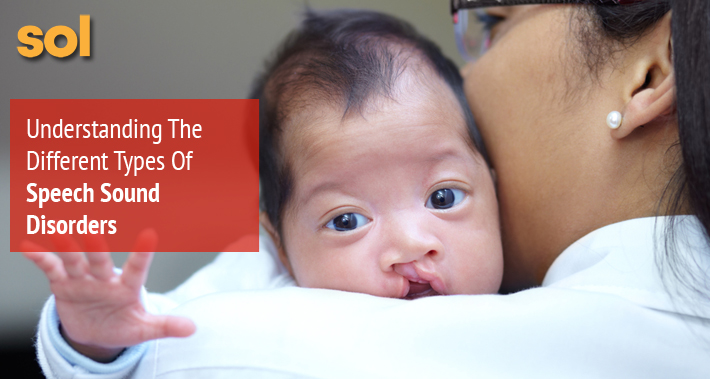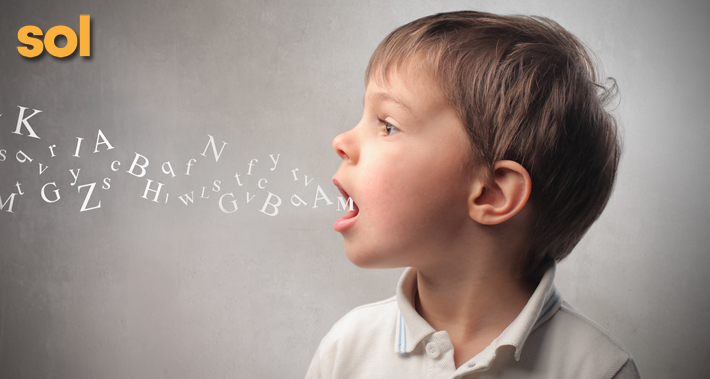
Articulation disorders, apraxia of speech, and dysarthria, oh my.
When talking about types of speech sound disorders it’s easy to get overwhelmed.
There are so many different speech sound disorders that you might be unsure how to narrow down what type you or your child might have.
Though, regardless of the disorder affecting you or your child, speech sound disorder therapy can help.
In the meantime, here’s a beginner’s guide to speech sound disorders so you can get the information you’ve been looking for.
What Is A Speech Sound Disorder?
The term “speech sound disorders” is an umbrella term describing personal difficulties with speech sounds.
It can include trouble with:
- Perceiving sounds
- Representing sounds in speech
- Motor difficulty with speech sounds
All of this falls under the umbrella of a speech sound disorder.
There are two different categories of speech sound disorders: organic and functional.
An organic speech sound disorder is when there’s an obvious underlying cause.
This cause can be structural – as in, related to the structure of your oral cavity.
Cleft lip and cleft palate are a good example of this.
It can also be sensory, like with a speech issue due to hearing loss.
It can also be linked to your ability to control speech muscles.
If the disorder has no known cause, then it is considered a functional speech disorder.
This is also known as “idiopathic.”
You might suspect a speech sound disorder if your child isn’t picking up certain sounds by the ages they’d be expected to do so, for example.
RELATED: Baby Speech Therapy Developmental Milestones
RELATED: Pediatric Speech Therapy Services
Let’s take a closer look at some of the more common speech sound disorders.
What Is Childhood Apraxia Of Speech?
Childhood apraxia of speech is also known as developmental verbal dyspraxia.
It’s a type of speech sound disorder where your child has trouble coordinating the muscles they need for speech.
It’s not about muscle weakness, but your child’s brain having difficulty learning how to move their lips, tongue, and jaw while speaking.
Also important to note is that your child isn’t having trouble understanding what they’re trying to say, but can’t get themselves to say it.
This can be frustrating for your child, but there is hope.
Speech therapy for childhood apraxia of speech has been shown to be very effective, and we’re here to help your family get started.
What Does Apraxia Of Speech Sound Like?
There is some variation in how apraxia of speech might present in your child.
Here’s a guide to give you an idea of what it would sound like at different ages.
Between 18 Months To 2 Years
- First words happen later than expected
- Only able to make a few sounds
- Limited vocabulary compared to peers
Between 2 And 4 Years
- Trouble with correct separation between words or syllables
- Less difficulty saying shorter words than longer ones
- Distortion in their consonants or vowel sounds
- Errors in voicing certain words
- Pronouncing the same word differently every time
What Causes Apraxia Of Speech?
Childhood apraxia of speech is caused by a disconnect between your child’s face muscles and the part of their brain that controls them.
Why this happens isn’t yet understood.
It’s possible that the disorder comes from a neurological condition or a traumatic brain injury, but other causes might include genetic conditions or metabolic disorders.
Whatever the cause of your child’s apraxia of speech, remember that speech therapy can help.
This disorder can affect adults too, so adult speech therapy can also help treat apraxia of speech.
But it’s a condition that starts in early childhood.
So adults who have apraxia of speech have had it for a long time.
Either way, speech therapy can help.
What Is Dysarthria?
Unlike apraxia of speech, dysarthria is a speech disorder caused by muscle weakness.
Usually, dysarthria is considered a motor speech disorder.
Damage, paralysis, or disruption to your nervous system are some of the potential causes of dysarthria.
There are diseases that disrupt the nerves that control certain muscles called neuromuscular conditions.
These include muscular dystrophy and multiple sclerosis.
These conditions can often lead to dysarthria, though brain and vocal cord injuries can also be causes.
No matter the cause for your dysarthria, a speech pathologists can help.
What Is The Difference Between Apraxia And Dysarthria?
When you have apraxia of speech, your challenges will be around retrieving words and putting them in the correct order.
It’s not an issue with your speech muscles.
Rather, it’s a disconnect between your face muscles and the part of your brain that controls them.
Dysarthria, on the other hand, is an issue with the muscles that control your speech.
What Does Dysarthria Look Like In Children?
With developmental dysarthria, the dysarthria your child experiences is present at birth.
Because of this, parents tend to notice symptoms of dysarthria pretty early on.
The telltale sign is having trouble moving their facial muscles from a young age.

What Is An Articulation Disorder
Articulation is how you pronounce different sounds with your mouth.
The human mouth has different parts, called articulators.
These include your:
- Teeth
- Tongue
- Lips
- Hard palate
- Soft palate
- Uvula
- Glottis (the space between your vocal folds)
If you have an issue with one or more of these parts of your mouth, you may have an articulation disorder.
This can cause difficulty making certain sounds.
Some sounds, like the sound ah, don’t require nuanced movement that would make it difficult to say.
But, other sounds require sophisticated movement from specific parts of your mouth.
For example, f and s sounds.
If you or your child has an articulation disorder, those more complex sounds may be difficult to pronounce.
Speech pathologists are trained to work with you on your articulation.
What Are The Signs Of An Articulation Disorder?
To know if your child has an articulation disorder, it’s important to know the speech milestones and whether or not they’re hitting them.
For example, by their first birthday your baby would usually be starting to say their first multi syllable “proto words.”
These are combinations of sounds that usually don’t mean anything.
By age four your child should be able to make all of the sounds required of them for speech.
If they’re struggling it could mean they have an articulation disorder.
What Causes Articulation Disorder?
Articulation disorders don’t have a specific known cause.
If there’s something going on with your or your child’s articulators, speech therapy can help you work on those skills to improve your ability to make certain sounds.
Phonological Disorder
Phonological disorders are speech disorders that can make speaking difficult.
If you have a phonological disorder it means your brain has difficulty sorting the verbal information it receives.
There are a few ways this may manifest.
One way, called “fronting,” describes the process of creating sounds that should be made in the back of your mouth in the front of your mouth.
However, it’s not about having the inability to make certain sounds.
It’s more about being able to mentally recognize when and how you’re supposed to make said sounds.
What’s An Example Of A Phonological Disorder?
If your child is fronting, you’ll be able to hear the difference in the sounds they make.
For example, sounds like gah and kah are made in the back of the mouth, but your child might say tah or bah instead.
While your child may sometimes be able to make the sounds you’d expect, they might not to be able to perceive the difference themselves.
What’s The Difference Between Articulation And Phonological Disorders?
While articulation disorders affect the motor parts of your speech creation, phonological disorders involve the linguistics part of speech.
Phonological disorders are learning disabilities, while articulation disorders involve a physical barrier to speech.
Ultimately, phonological disorders involve your ability to understand language, not form it.
Speech therapy can help with phonological disorders as well as articulation disorders.
Cleft Lip And Cleft Palate
A cleft palate or lip is something called a “craniofacial condition” that is present at birth.
It indicates an opening in the palate or lip that can vary in severity.
A “hidden cleft” is one where just the submucous lining of yoru child’s hard palate hasn’t fused completely to the midline of their mouth.
On the other hand, a cleft lip is usually quite visible.
Symptoms of a cleft palate or lip might include less babbling in infancy, saying fewer consonant sounds, and a limited number of sounds produced in general.
There are also visual indications that your child might have a cleft palate that often involve their teeth.
Missing or excess teeth, having a bite that doesn’t close completely, or an underbite or overbite could be symptoms of a cleft palate.
What Is The Difference Between Cleft Lip And Cleft Palate?
A cleft palate would be an opening in the palate, which is the roof of your mouth.
A cleft lip is a gap in the upper lip where it did not form fully.
Often, these two types of clefts occur together.
How Does Cleft Lip And Palate Affect Language?
When you’re talking, your soft palate moves to create sounds.
If you have a cleft this is more difficult.
Because it’s harder to learn new sounds and words, there can be speech delays in children who have cleft palates.
Delays in expressive language for children with a cleft lip and palate are often the case.
This is because it takes longer for them to build the same inventory of words.
Can Speech Sound Disorders Be Fixed?
Speech therapy for speech sound disorders can help.
Your speech therapist will focus on helping you make the correct sounds and keep your attention on whether the sounds you’re making are correct or not.
Speech sound perception training may be used to target phonological disorders.
On the other hand, oral motor therapy may be used to focus on articulation disorders.
No matter your need, your speech therapist will focus on creating a plan that is tailored to your unique concerns.
Book Your Appointment With Sol Speech And Language Therapy Today
If you’re looking for assistance navigating your speech sound disorder, don’t hesitate a moment longer.
Our licensed therapists can help you build the confidence you’ve been missing.
Get started with a consultation at any one of our clinic locations today.
Book your appointment with Sol Speech and Language Therapy.
6448 E Hwy 290 Suite E-108,
Austin, TX 78723
(512) 368-9488
» https://g.page/r/CfRfhOpEQm7BEAE
Sol Speech & Language Therapy
555 Round Rock W Dr E-221,
Round Rock, TX 78681
(512) 808-3953
» https://g.page/r/Cb5pwCTosSEfEBM
Sol Speech & Language Therapy offers personalized skilled intervention to those struggling with their speech and language skills. Services offered include screening, consultation, and comprehensive evaluation. We also provide one-on-one and/or group therapy for speech sound disorders, receptive/expressive language delay/disorder, stuttering/cluttering, accent reduction, and much more.